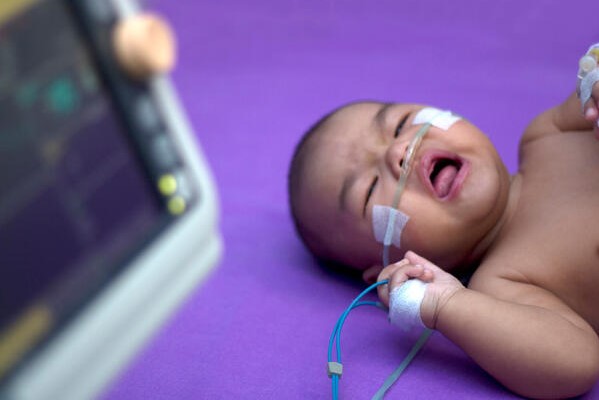
Respiratory distress: What Are the Signs of Respiratory Distress in Newborns?
Respiratory distress: for adults and children, respiratory diseases are typically just a minor annoyance. For neonates, they can be fatal
Respiratory distress is a leading cause of death in newborns, particularly premature infants
In addition to infectious causes, it also occurs in 7% of neonates.
Newborns are very vulnerable, so a prompt response can be life-saving.
Complicating things is that they are obligate nasal breathers–when they cannot breathe through the nose, they typically do not open the mouth to breathe.
This can quickly lead to life-threatening hypoxia.
CHILD HEALTH: LEARN MORE ABOUT MEDICHILD BY VISITING THE BOOTH AT EMERGENCY EXPO
EMS professionals and medical providers should carefully monitor neonates, especially those experiencing infections and those who are suspected of inhaling meconium for signs of respiratory distress, including:
-
Retractions
When a neonate cannot get enough oxygen, the intercostal muscles attempt to compensate for this by working harder.
You may notice retractions—the collapsing of the skin around the ribs so that the ribs become visible and the muscles look strained with each breath.
-
Nostril Flares
Newborns usually breathe exclusively through their nostrils, so when they can’t get sufficient oxygen their nostrils tend to flare.
Nasal flaring should never be ignored, especially if accompanied by other symptoms of respiratory distress.
-
Loud Breathing
As with adults and children, loud and raspy breathing sounds may signal respiratory distress.
In neonates, loud breathing may be a sign of slow transition or meconium aspiration.
In older newborns, loud breathing usually accompanies respiratory infections, especially the quite common respiratory syncytial virus.
-
Blue Color
A blue color is a sign of oxygen deprivation.
Newborns may also look white or ashen.
Check the nail beds, lips, and tongue, since they often turn blue or white first.
Healthy newborns quickly turn pink after birth, and remain so. A pale color is always cause for concern.
-
Rapid Breathing
Newborns breathe much faster than adults and children—normally 40 to 60 breaths per minute.
So rapid breathing can be quite dramatic and may produce audible sounds.
Count a newborn’s breaths, and consider anything in excess of 60 breaths per minute a signal of respiratory distress.
-
Increased Pulse
When the body cannot get enough oxygen, the heart beats more rapidly to compensate.
The typical newborn pulse is 120-160 beats per minute.
Anything higher than this is a sign of respiratory distress.
When accompanied with rapid breathing or changes in color, this can indicate that a neonate is in a hypoxic state.
-
Altered Consciousness
In adults and children, altered consciousness is easier to detect.
Newborns sleep a lot and can’t talk, so signs of altered consciousness are easy to miss.
However, like adults, newborns can and do behave differently when they are hypoxic.
Look for excessive sleepiness, feeding difficulties, lethargy, and difficulty waking up.
A newborn who does not respond to having their cheek or foot stroked may be in respiratory distress.
-
Feeding Difficulties
Some neonates struggle to eat when in respiratory distress.
This is especially true among breastfed infants, who must suck harder than those taking milk from a bottle.
These feeding difficulties can intensify and compound other symptoms, particularly lethargy.
A baby who has not eaten in several hours or who cries of hunger but who will not eat may be in pain or respiratory distress.
Treating respiratory distress in newborns often requires rapidly suctioning the airway
The right equipment is critical to the success of this mission because neonates’ airways are inherently fragile and prone to injury.
Moreover, prompt emergency suctioning can save lives, especially in the event of meconium aspiration.
First responders must have neonate-sized equipment and a portable emergency suction machine at the ready.
Read Also:
Emergency Live Even More…Live: Download The New Free App Of Your Newspaper For IOS And Android
Obstructive Sleep Apnoea: What It Is And How To Treat It
Obstructive Sleep Apnoea: Symptoms And Treatment For Obstructive Sleep Apnoea
Our respiratory system: a virtual tour inside our body
Tracheostomy during intubation in COVID-19 patients: a survey on current clinical practice
FDA approves Recarbio to treat hospital-acquired and ventilator-associated bacterial pneumonia
Clinical Review: Acute Respiratory Distress Syndrome
Stress And Distress During Pregnancy: How To Protect Both Mother And Child



